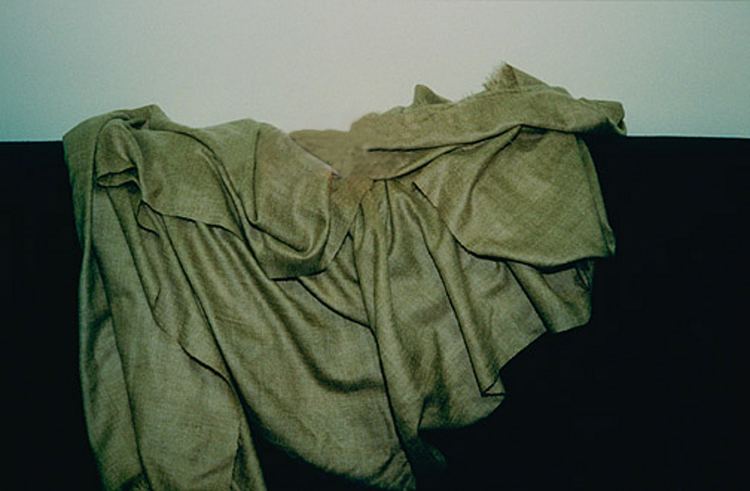 | ||
Shahtoosh (also written shahtush, a Persian word meaning "king of fine wools") is the name given to a specific kind of shawl, which is woven with the down hair of the Tibetan antelope (chiru), by master craftsmen and women of Kashmir, Northern India. The Shahtoosh shawl is now a banned item with possession and sale being illegal in most countries for the Chiru is an endangered species under CITES. However, the weaving of Shahtoosh shawls continues in secret in Kashmir due to high demand by western buyers. The estimated market value of one Shahtoosh shawl in the western market is around $5000–6000. Shahtoosh is the world's finest wool having the lowest micron count, followed by Vicuna and Pashmina.
Contents
Characteristics
These shawls were originally very few and could only be woven by master artisans to weave the delicate hair which measured between 7 and 10 microns. These factors made shahtoosh shawls very precious. Shahtoosh shawls are so fine that a large shawl can be passed through a wedding ring, leading to them also being known as 'ring shawls.'
Source of the fibre
The Tibetan antelope or Chiru lives in one of the harshest environments on earth, at an altitude of over 5,000 metres. Their special type of down fur, which is both very light and warm, allows them to survive in the freezing conditions of the plateau where they gather at one point of the year. They are migratory animals - moving down from Mongolia to Tibet - and traditionally followed closely by the nomads, who also make that journey every year. The nomads would hunt the antelope for all that it provided them - hide, meat, bones, horns and fur pelts.
Types of Shahtoosh shawls
The type of Shahtoosh is determined by the quantum of Toosh or Tibetan Antelope down in the fabric. The measurement system used for determining it is called Dani in Kashmiri, with 1 Dani equal to 1/16 in terms of fibre composition. The typical types of Toosh are:
- Shurah Dani or 16 Dani: a 100% Toosh Shawl,
- Bah Dani or 12 Dani: a 75% Toosh and 25% Pashmina Shawl, and
- Aeth Dani or 8 Dani: a 50% Toosh and 50% Pashmina Shawl wherein the warp is generally of Toosh and the weft is Pashmina.
History
Under Emperor Akbar, the imperial wardrobe began to patronise Tus or Shahtoos on a large scale. It was the costliest, warmest and the most delicate shawl. It was so soft so as to pass through a finger ring. Its natural colours were black, white and red. It is said that Akbar once gave orders for the white to be dyed into red but the shawl did not take the colour of the dye. People began to use it simply in its natural colours.
The antelope have been hunted down specifically for its fur, and their numbers have dropped accordingly from nearly a million (estimated) at the turn of the 20th century to less than 75,000 today. The numbers continue to drop yearly. This led to the antelope now being listed as an endangered species and given the highest possible level of legal protection, whereby no commercial trade in shahtoosh is permitted.
The selling or owning of shahtoosh was made illegal in all countries that signed the Convention on International Trade in Endangered Species. Many countries have cracked down on those involved in the shahtoosh trade. Although shahtoosh is banned under the agreement, illegal hunting and selling of shahtoosh remains a serious problem in Tibet.
